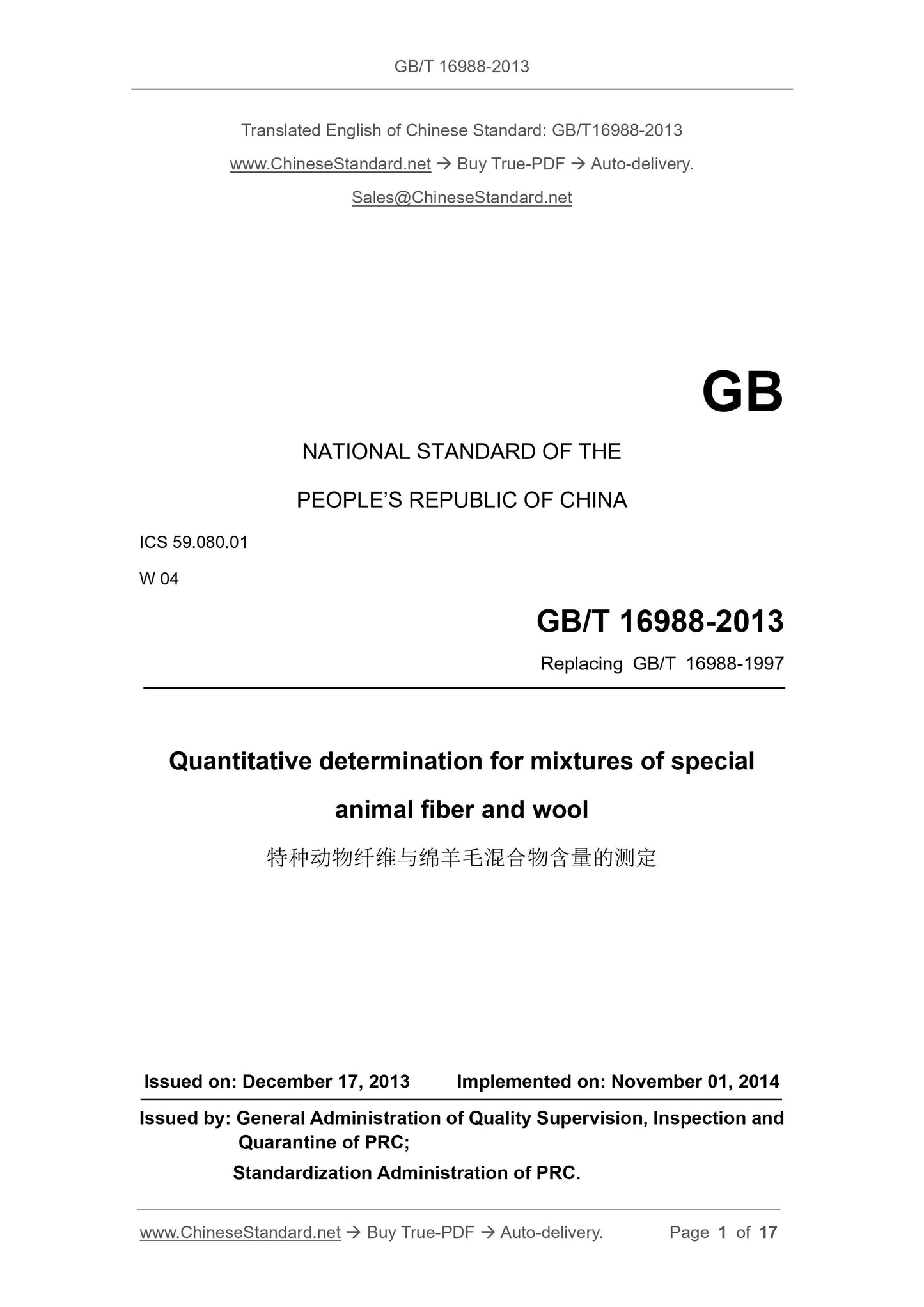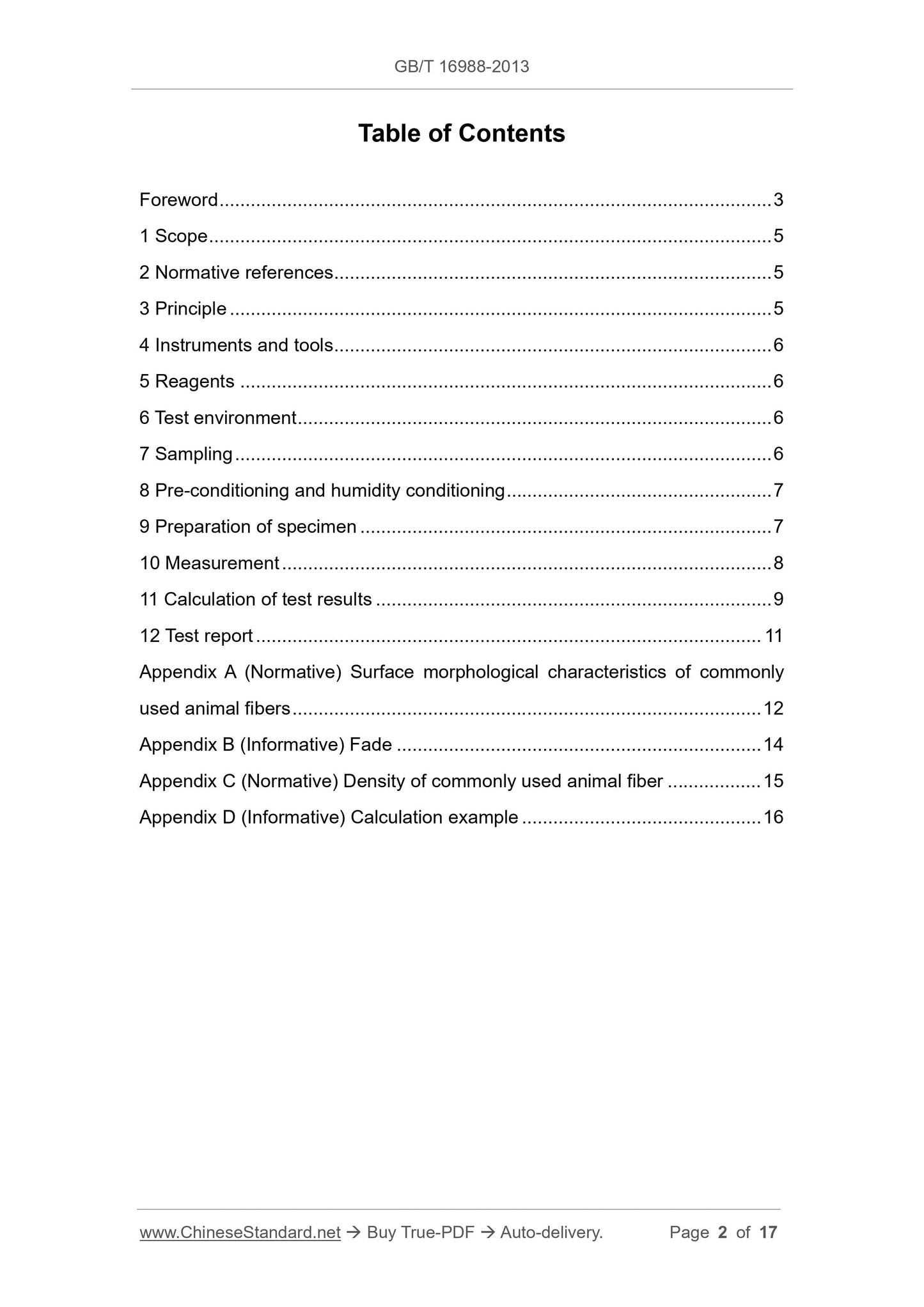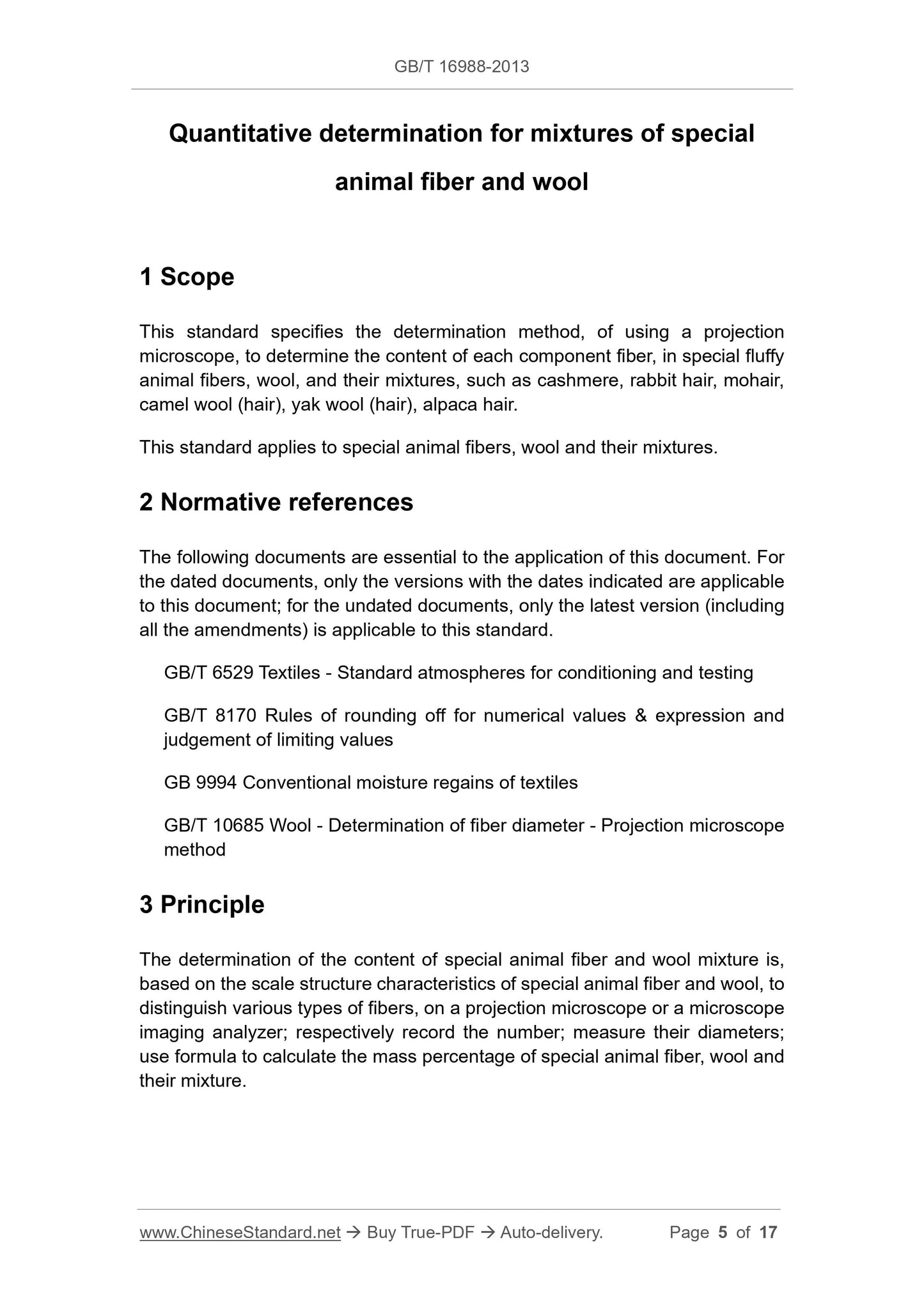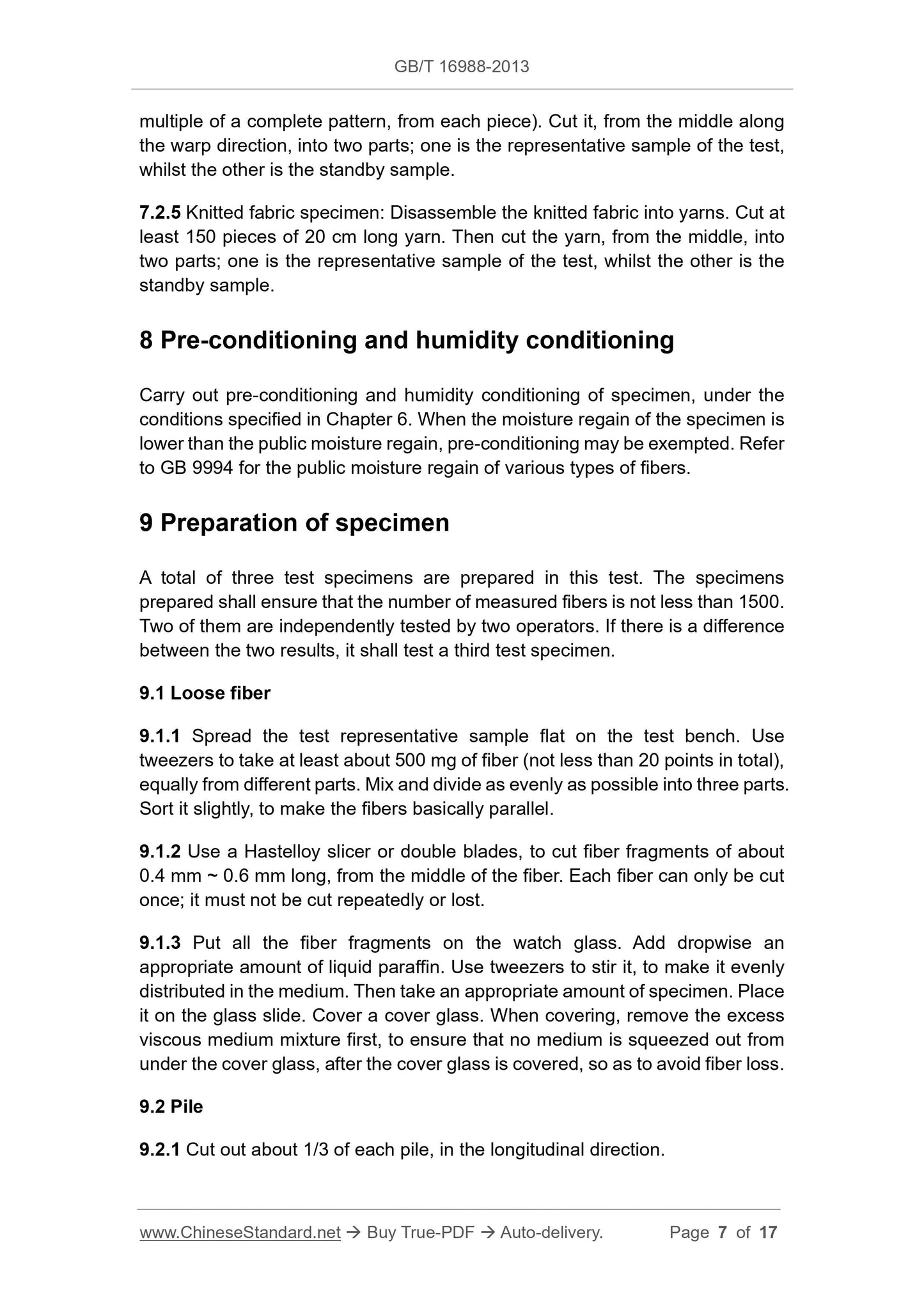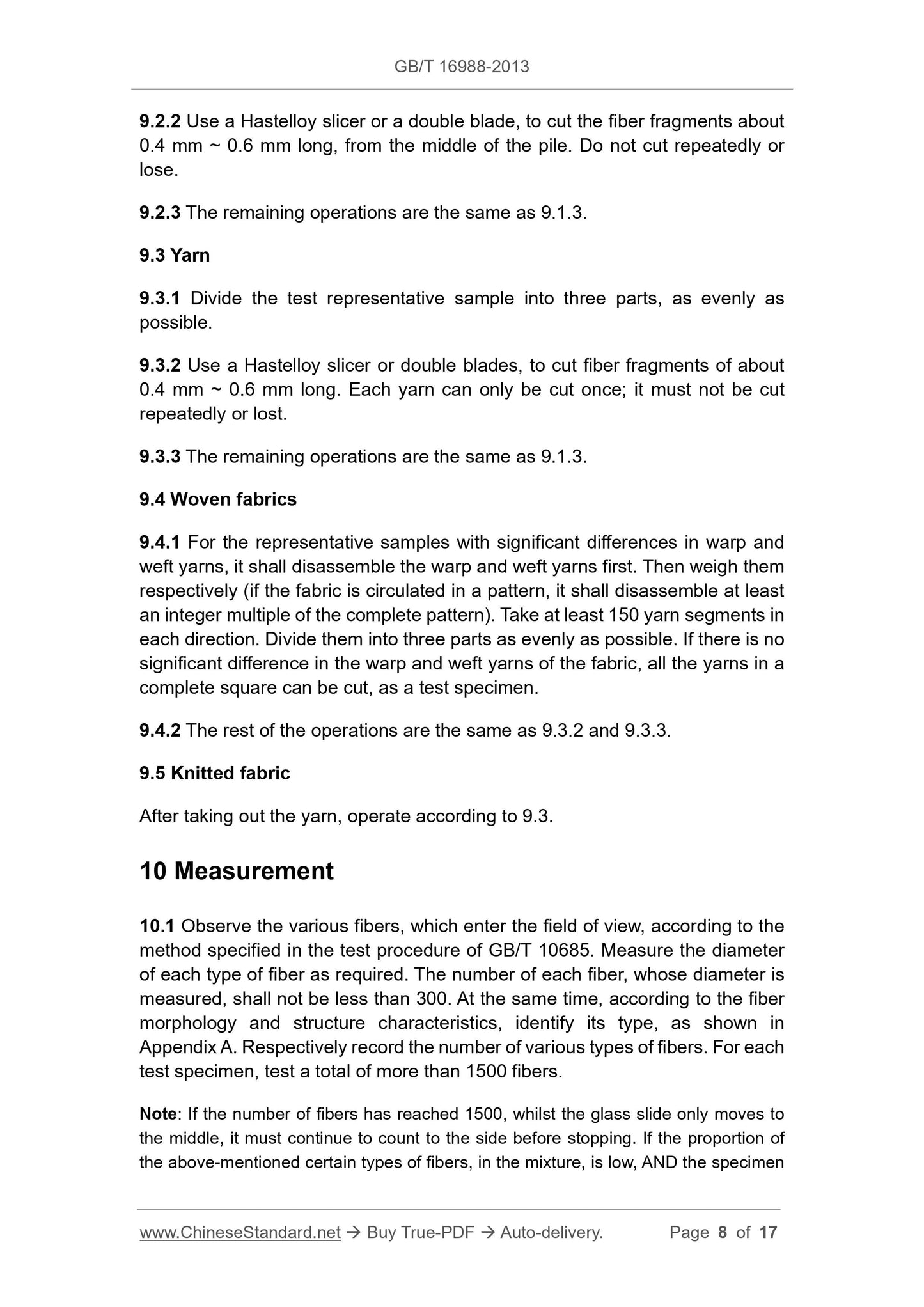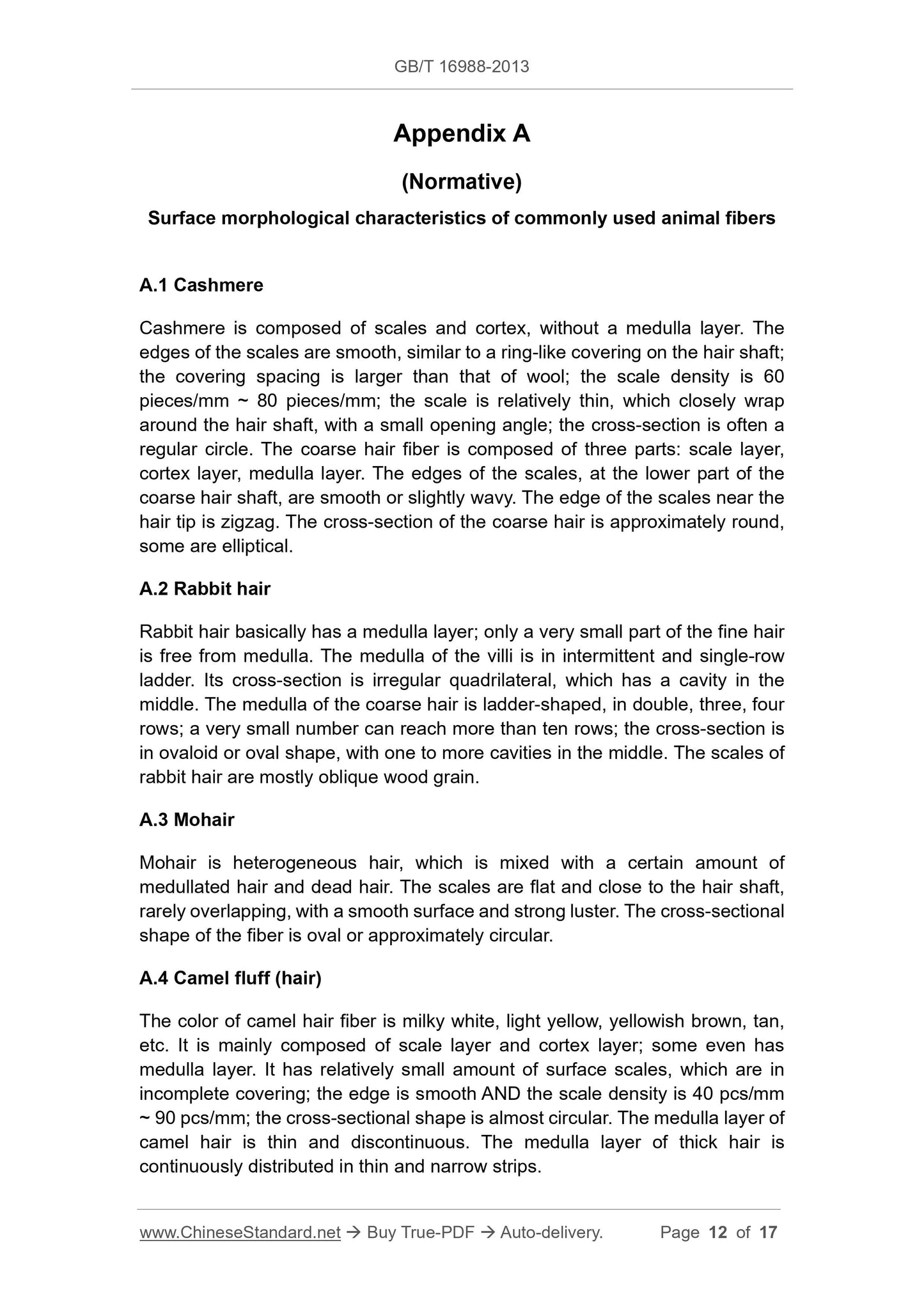1
/
of
6
www.ChineseStandard.us -- Field Test Asia Pte. Ltd.
GB/T 16988-2013 English PDF (GB/T16988-2013)
GB/T 16988-2013 English PDF (GB/T16988-2013)
Regular price
$105.00
Regular price
Sale price
$105.00
Unit price
/
per
Shipping calculated at checkout.
Couldn't load pickup availability
GB/T 16988-2013: Quantitative determination for mixtures of special animal fibre and wool
Delivery: 9 seconds. Download (and Email) true-PDF + Invoice.Get Quotation: Click GB/T 16988-2013 (Self-service in 1-minute)
Newer / historical versions: GB/T 16988-2013
Preview True-PDF
Scope
This standard specifies the determination method, of using a projectionmicroscope, to determine the content of each component fiber, in special fluffy
animal fibers, wool, and their mixtures, such as cashmere, rabbit hair, mohair,
camel wool (hair), yak wool (hair), alpaca hair.
This standard applies to special animal fibers, wool and their mixtures.
Basic Data
| Standard ID | GB/T 16988-2013 (GB/T16988-2013) |
| Description (Translated English) | Quantitative determination for mixtures of special animal fibre and wool |
| Sector / Industry | National Standard (Recommended) |
| Classification of Chinese Standard | W04 |
| Classification of International Standard | 59.080.01 |
| Word Count Estimation | 12,191 |
| Older Standard (superseded by this standard) | GB/T 16988-1997 |
| Quoted Standard | GB/T 6529; GB/T 8170; GB 9994; GB/T 10685 |
| Regulation (derived from) | National Standards Bulletin No. 25 of 2013 |
| Issuing agency(ies) | General Administration of Quality Supervision, Inspection and Quarantine of the People's Republic of China, Standardization Administration of the People's Republic of China |
| Summary | This standard specifies the use of projection microscope cashmere, angora, mohair, camel hair (hair), yak wool (wool), alpaca and other types of special animal fluff fiber, wool and fiber content of each component in the mixture measurement method. The st |
Share
